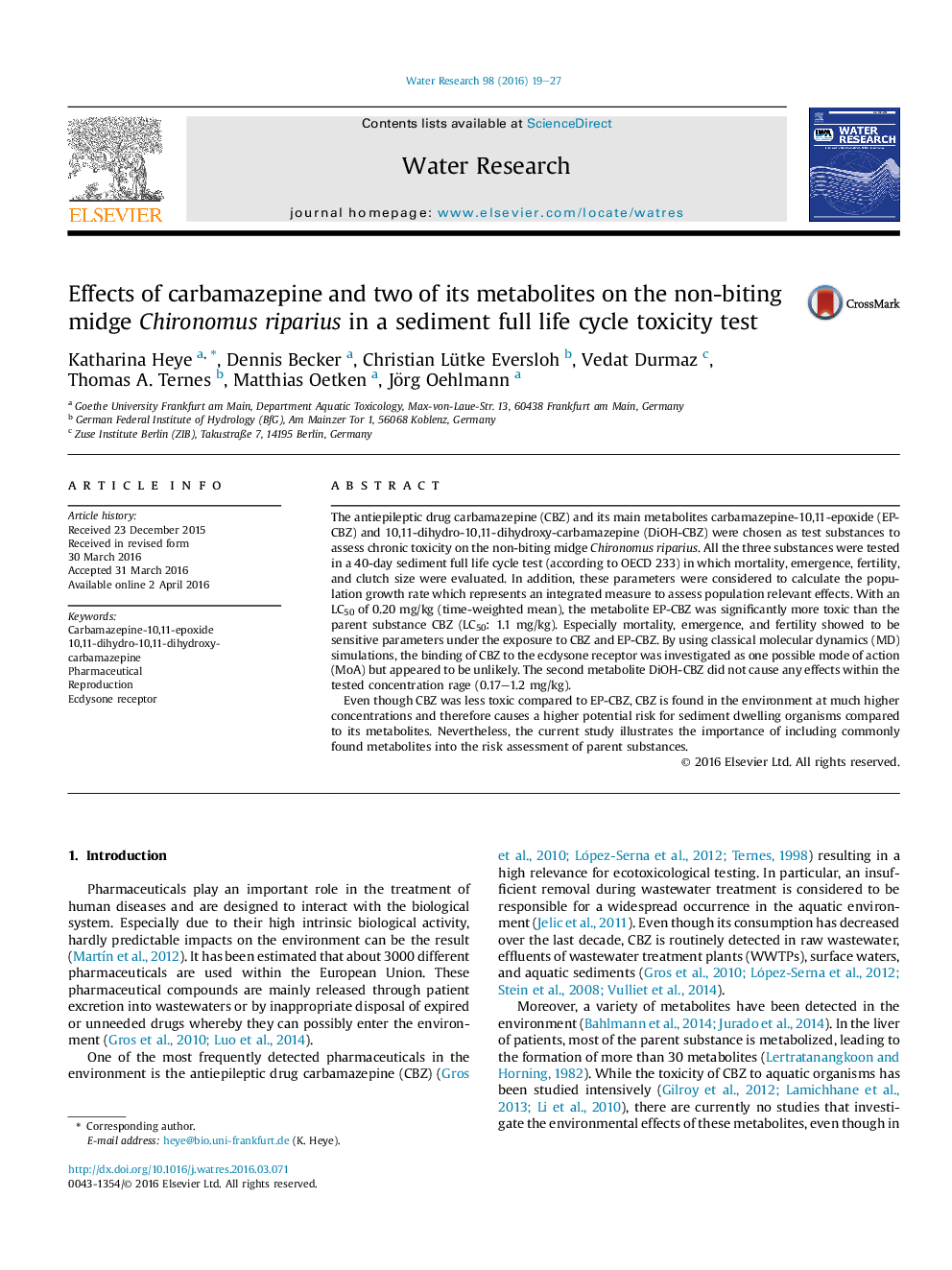| کد مقاله | کد نشریه | سال انتشار | مقاله انگلیسی | نسخه تمام متن |
|---|---|---|---|---|
| 4480966 | 1623070 | 2016 | 9 صفحه PDF | دانلود رایگان |
• First study of carbamazepine's metabolites in a full life cycle toxicity test.
• Carbamazepine-10,11-epoxide is more toxic to Chironomus riparius than carbamazepine.
• Carbamazepine and carbamazepine-10,11-epoxide pose a hazard for sediment organisms.
• Molecular dynamics simulations were applied to model receptor affinities.
The antiepileptic drug carbamazepine (CBZ) and its main metabolites carbamazepine-10,11-epoxide (EP-CBZ) and 10,11-dihydro-10,11-dihydroxy-carbamazepine (DiOH-CBZ) were chosen as test substances to assess chronic toxicity on the non-biting midge Chironomus riparius. All the three substances were tested in a 40-day sediment full life cycle test (according to OECD 233) in which mortality, emergence, fertility, and clutch size were evaluated. In addition, these parameters were considered to calculate the population growth rate which represents an integrated measure to assess population relevant effects. With an LC50 of 0.20 mg/kg (time-weighted mean), the metabolite EP-CBZ was significantly more toxic than the parent substance CBZ (LC50: 1.1 mg/kg). Especially mortality, emergence, and fertility showed to be sensitive parameters under the exposure to CBZ and EP-CBZ. By using classical molecular dynamics (MD) simulations, the binding of CBZ to the ecdysone receptor was investigated as one possible mode of action (MoA) but appeared to be unlikely. The second metabolite DiOH-CBZ did not cause any effects within the tested concentration rage (0.17–1.2 mg/kg).Even though CBZ was less toxic compared to EP-CBZ, CBZ is found in the environment at much higher concentrations and therefore causes a higher potential risk for sediment dwelling organisms compared to its metabolites. Nevertheless, the current study illustrates the importance of including commonly found metabolites into the risk assessment of parent substances.
Figure optionsDownload high-quality image (353 K)Download as PowerPoint slide
Journal: Water Research - Volume 98, 1 July 2016, Pages 19–27
